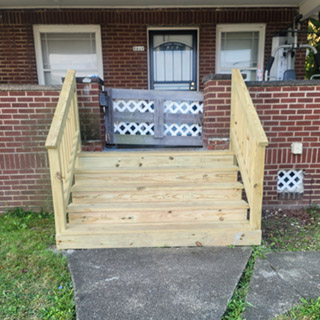The city’s board of control approved a $1.35 million development site grant for a planned defense and aerospace manufacturing center in the former Vindicator building.
The board, which consists of Mayor Jamael Tito Brown, Lori Shells Simmons, law director, and Kyle Miasek, finance director, approved the grant to the Youngstown Business Incubator to support redevelopment of the building at 107 Vindicator Square. The grant will be made in four $337,500 installments.
“I think that’s a big piece for us,” Brown said. “When we continue to talk about the economic investment that’s downtown, that just continues to add to that. I think that sets Youngstown on the next path of where we’re going.”
Barb Ewing, YBI CEO, told The Business Journal in November that YBI wants to use the center as a way to ramp up the already strong impact of the U.S. Department of Defense through its presence at America Makes.
Brown said the investment marks a turning point for the city with a new industry.
“Now we’re turning a corner with the city,” the mayor said. “From the steel town to manufacturing and now aerospace – how big and how great of an opportunity is that for us.”
YBI hopes to lease the former newspaper building and convert it into a center for defense and aerospace manufacturing, research and development. It’s dependent on a $26 million grant from the Ohio Department of Development toward the development of an Ohio Innovation Hub. About $11 million in local matching funds would add to the project.
The project is estimated to have an economic impact of $191.7 million, creating an estimated 271 full-time jobs with an average salary of $81,806, and another 481 indirect jobs.
The center is tentatively dubbed the Youngstown Innovation Hub for Defense and Aerospace.
If the $26 million grant is successful, a portion of the money would be used to renovate the former Vindicator building, allowing the expansion of JuggerBot 3D and Ursa Major, two portfolio companies that have outgrown their space in Tech Block Building No. 5. The building was also part of the former Vindicator operations.
Other Business
The board of control also increased by $14,388 the contract with TransDev Services Inc. for an accessible automated vehicle shuttle. That increases the contract amount to $696,435. The funds are coming from a Better Utilizing Investments to Leverage Development grant.
“Within two weeks it should be on the road,” said Charles Shasho, deputy director of public works. “They’ll be testing it.”
The increase was to add software, he said.
Transdev is a global transit services provider that has its U.S. headquarters in Lombard, Ill. It is the same company that Western Reserve Transit Authority has entered into an agreement with to provide similar services for WRTA’s one-year demonstration project.
The board also approved a $20,000 professional service agreement with the Youngstown Neighborhood Development Corporation for the Sixth Ward Glenwood Avenue Corridor Project. It also increased the allocations to YNDC for two other initiatives in the 6th Ward.
To read the full story from The Business Journal, click here.


